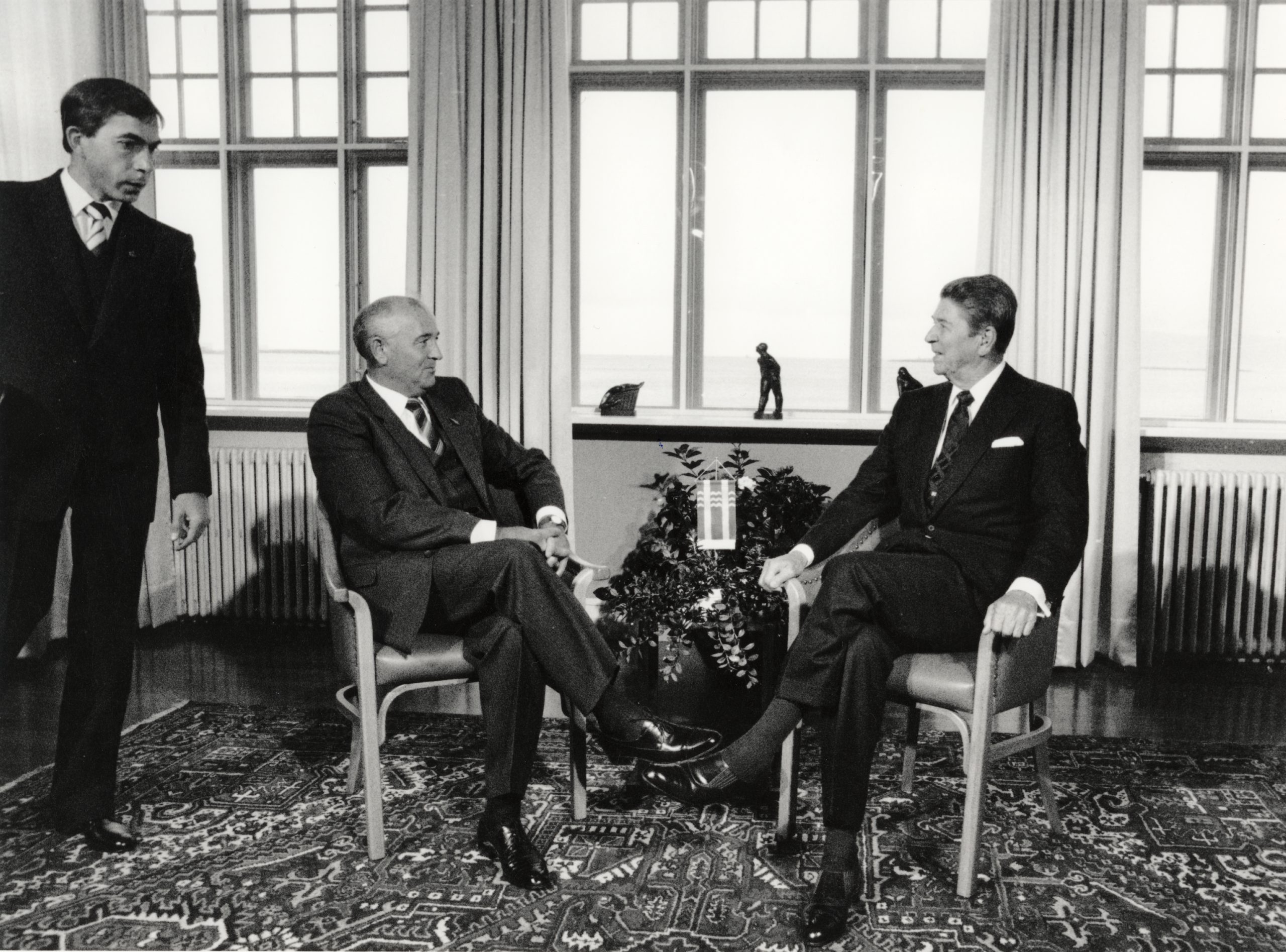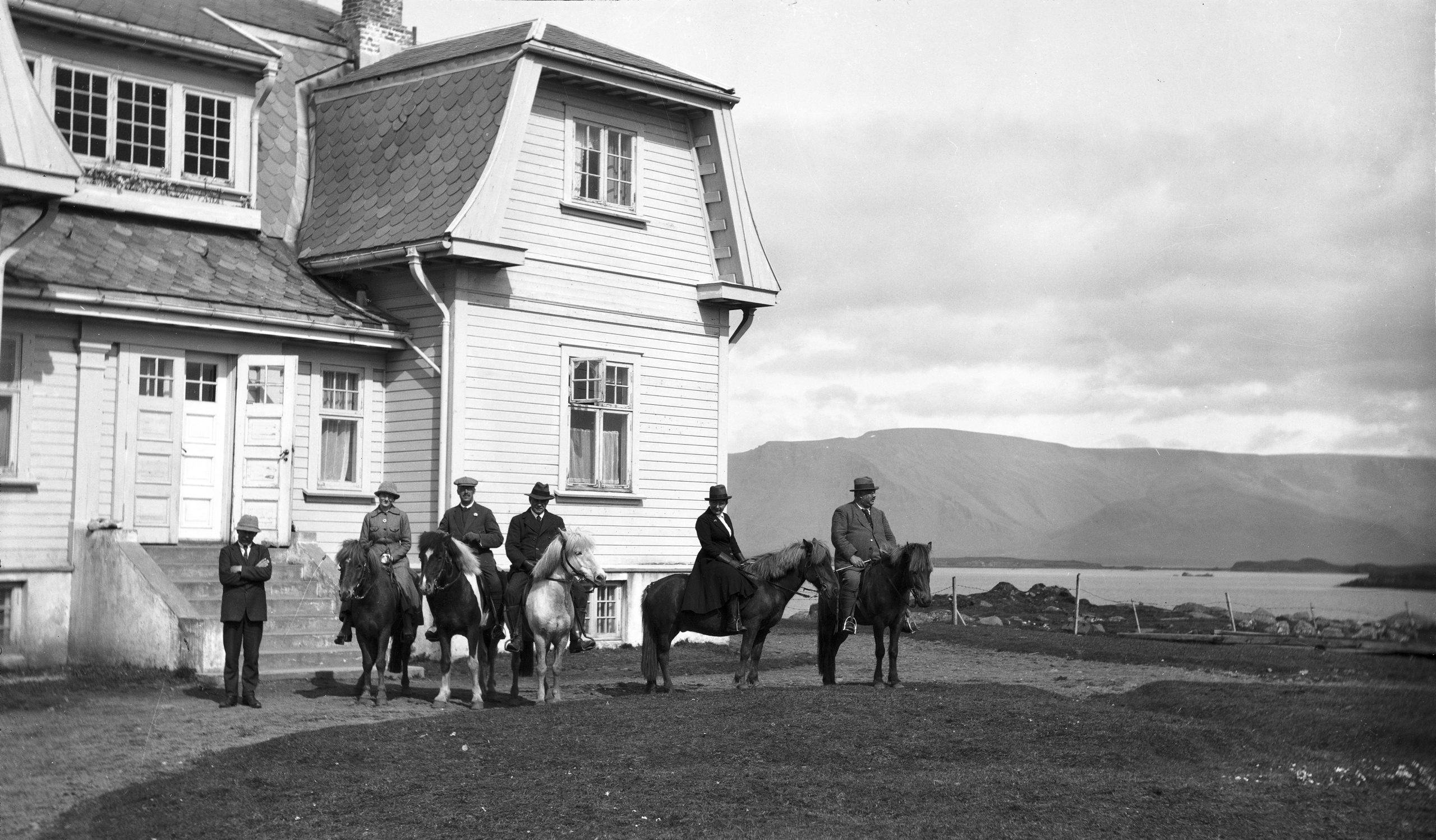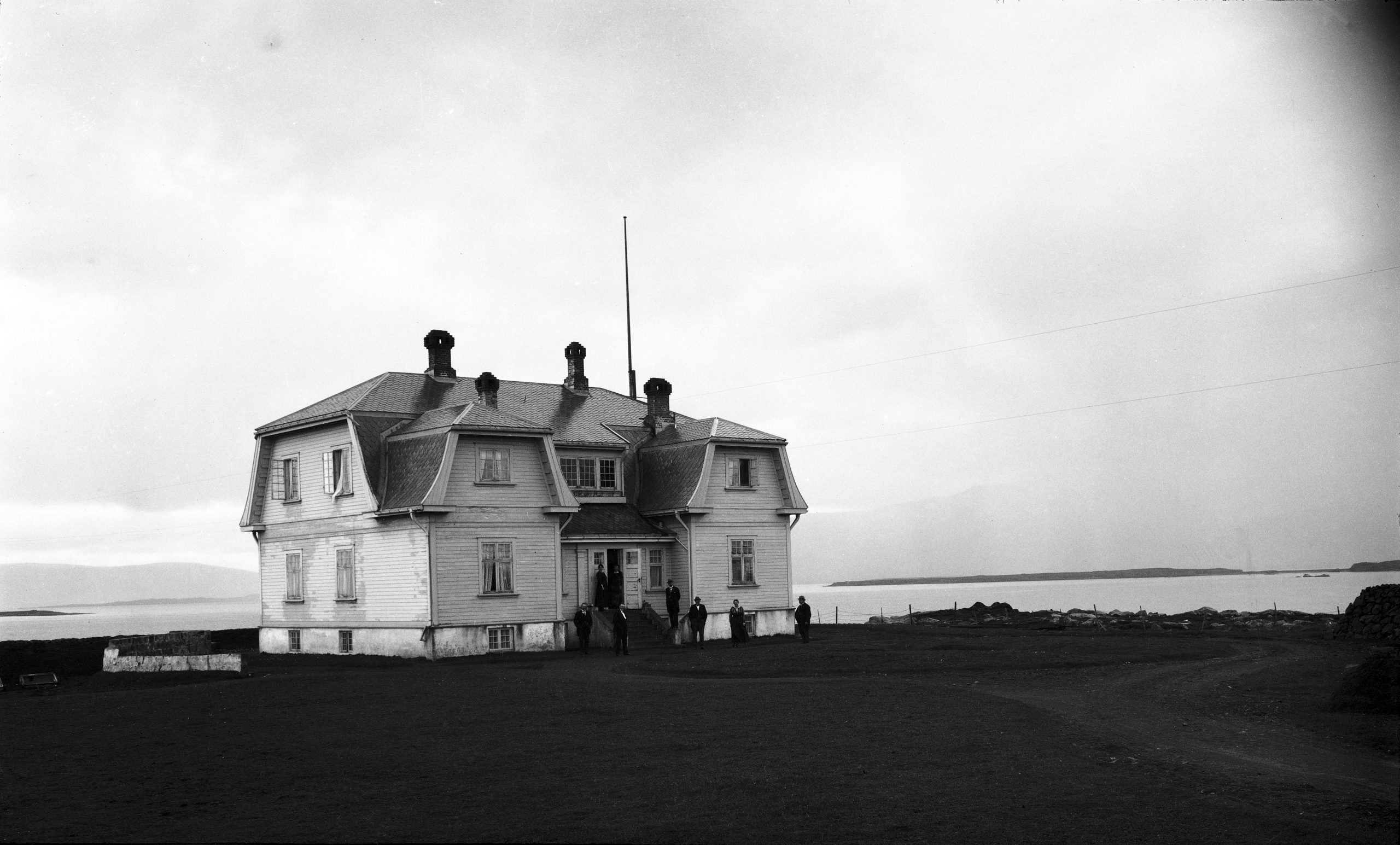
Photo: Dagblaðið Vísir
Höfði House has a remarkable history connected to Icelandic relations with other nations. The house was built for the French consul, Jean Paul Brillouin. Designed in Eastern Norway, it was transported to Iceland in kit form for assembly. The building displays features of the Art Nouveau (Jugend) style, classical, neobaroque and Norwegian national romanticism. In the formal reception room, Brillouin’s name is inscribed in gold above the doorway, together with the date of construction, 1909. Höfði House had an ambiance of dignity in its early decades. After Brillouin’s time it was the family home of poet/entrepreneur Einar Benediktsson. But the family which lived longest in the house was that of Dr. Matthías Einarsson; his daughter, Louisa Matthíasdóttir, went on to be a famous artist. From 1938 until after World War II, Höfði House was the residence of the British consul and later ambassador. Among those who visited during the war were British Prime Minister Winston Churchill and actress Marlene Dietrich. From the middle of the 20th century many people lived in Höfði House for varying periods. It was also used as business premises. The City of Reykjavík purchased the house in 1958 and in the following years it was restored. Since 1967 it has been a reception house for the City government. In October 1986 Höfði House was the setting of the famous summit meeting between Reagan and Gorbachev, which was regarded as marking the beginning of the end of the Cold War. When the Baltic nations reclaimed their independence, Iceland was the first nation to recognise it, and a declaration to that effect was signed in Höfði House in August 1991. Most foreign heads of state who visit Iceland make their way to Höfði House.


Photo: Magnús Ólafsson



